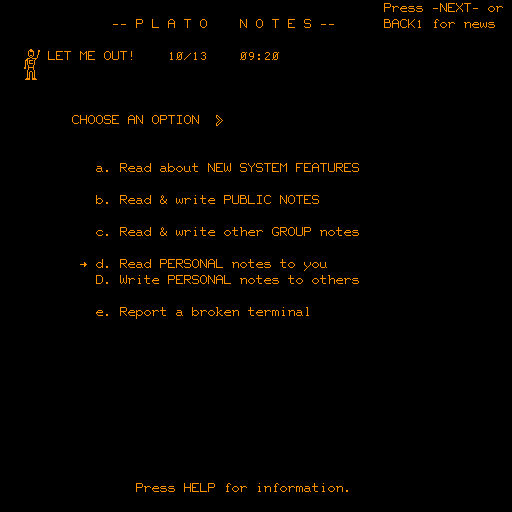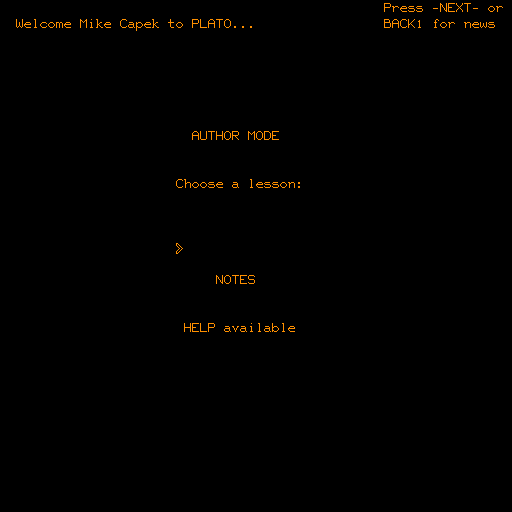Guanogap - First Online Virtual Story
GREAT GUANO GAP- First Online Interactive Story

PLATO initiated many creative directions in early computing. One significant and overlooked area is that of the interactive story and being online, it can be thought of as a "Virtual Story".
What connects a war, an online computer community, religion, and hacker/gamers?
"The Great Guano Gap"
In 1975 on the PLATO system at the University of Illinois Champaign-Urbana a unique new "lesson" appeared, -guanogap- It was the creation of an entirely new storytelling genre, the simulation of an online community ON the system on which the community existed, adding the fantasy of a new character.
As important, -guanogap- captured a snapshot of the online community in 1975, the group notes, the pnotes, how the communication interactively happened, the growth of the alternative (gaming) community, and the systems people.
The Great Guano Gap was written in serialized fashion by Bill Roper, Jim Wilson, and Bob Foster and was adapted for PLATO by Bill Roper.
The story created a new virtual character, the Supreme Being of P or in PLATO parlance "supreme being/p". It simulated the familar PLATO screens, page by page, as if one were looking over the shoulder of Bill Roper as he manouvered around to read his Pnotes (Personal Notes or what we call email today), Gnotes (General Notes which were the predecessors to blogs and bulletin boards), and term-talk (interactive Immediate Messaging).

The PLATO NOTES page provided links to personal and group notes; personal notes being the predecessor to email and group notes being a place for discussions on a topic, such as a Forum or Usenet Notes today. This was how it looked in 1975 and as simulated by Guanogap with two additions to the page:
- "Press -NEXT- or BACK1 for news" in upper right corner
- Image of "Mike Capek" with a "C" on his sweater and "LET ME OUT!"
The "-NEXT-" key was equivalent to "Enter" or "RETURN" on modern keyboards. "BACK" was another labeled key. "BACK1" was a way of telling the user to shift the BACK key. This addition was how the story reader moved around through the story; it told the reader when they could press a key, since at times there were various animations to watch.
Part of the Guanogap story was that one character, a real PLATO author, Mike Capek, who got dematerialized and rematerialized inside PLATO. He was locked in PLATO by the supreme being/p. When he showed up in the story on the screen, he was animated.

Here is the "AUTHOR MODE" page of PLATO. Students would not have been familiar with it, but all Authors (lesson programmers) would. It was the first page one saw after logging on and how one moved around to edit or try out lessons.
The PLATO system programmers and administrators would occasionally put a single line message to the users; it usually was announcing some new site, such as a University, had installed PLATO terminals. Here the inside joke was now Mike Capek was also being welcomed.
One really had to pay attention to the commonly seen messages and the text in pnotes shown during the story; they provided some inside humor and clues to the motivations of the story.